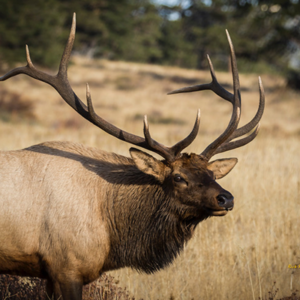 Fall is in the air, and the animals that take up summer residency in Colorado sense it, understanding the waning daylight and cooler temperatures as a signal that it is time to move. Migration is nearly universal in the animal kingdom, and a vast number of species participate in the process. From hovering hummingbirds in the air, to huge humpback whales in the sea, animals are active in retracing migratory patterns across the globe.
Fall is in the air, and the animals that take up summer residency in Colorado sense it, understanding the waning daylight and cooler temperatures as a signal that it is time to move. Migration is nearly universal in the animal kingdom, and a vast number of species participate in the process. From hovering hummingbirds in the air, to huge humpback whales in the sea, animals are active in retracing migratory patterns across the globe.
Not all migratory routes are long and arduous, but the longer the journey, the more physically taxing and dangerous it is for the animal. Will there be suitable habitat to rest and feed at along the way? Will the weather be stormy? These are questions that animals don’t have the answer to when they start their seasonal journeys. For birds, collisions with building windows and wires pose a huge threat. For mammals, like bears, fences or highways can block their migration path. With the incredible amount of energy required for travel, and the risks involved along the way, why migrate at all? Why not just remain in one spot?
The answer to why animals migrate is this. Migration is a behavioral adaptation designed to help animals survive. However challenging the journey may seem, the benefits outweigh the costs. Animals primarily migrate for one or more of the following three reasons: they are moving to find food, they are seeking suitable breeding grounds, or they are traveling to find a more hospitable climate.
In Colorado, we get the experience of watching both long and short-distance migrants. Starting in mid-August, rufous hummingbirds can be seen in the valley ardently fighting for spots at the feeders. These tiny birds that weigh in at just under four grams are long distance migrants, traveling up to 4,000 miles one way. Rufous hummingbirds breed as far north as southeastern Alaska, and migrate south to spend the winter months in Mexico. The arctic tern is probably the most famed migratory bird because it flies in total 25,000 miles during its yearly route. However, measuring migration based on body size (rufous hummingbirds are about three inches long compared to an arctic tern's 13-inch body length) reveals that rufous hummingbirds are actually longer distance migrants! We can consider ourselves very lucky that the Rocky Mountains serve as the perfect late summer migratory stop for the rufous hummingbird, allowing us an up-close look at one amazing tiny creature.
Some signature Rocky Mountain animals are migratory without ever leaving the state. This allows us the pleasure and possibility of viewing them year round. Elk and big horn sheep are two prime examples of short distance migrants, as these mammals vertically climb or descend in elevation seasonally. Elk move higher in the mountains during the spring, taking advantage of fertile grazing grounds, as well as a safe spot for the females to have their calves. In the winter, elk herds move down to pastures at lower elevations, where it is easier to paw through snow and find vegetation. The same is true for the white-tailed ptarmigan, who travels a short distance between summer and winter ranges, and also descends elevation in the winter in search for areas where plants are accessible above the snow.
Much about migration, however, remains a mystery. How do animals have the navigational ability to travel sometimes thousands of miles, and, in some cases, to places they have never been before? What are the exact triggers of these epic journeys? We know that humans were aware of these large-scale animal movements from rock images that date back over 20,000 years. Move forward to today, and questions about the how and why of migration still have modern scientists seeking answers. The determination that animals show on their migratory journey has inspired people from the very beginning. The unanswered questions keep us fascinated to this day.
Have you always wondered where the robins that frequent your yard hide in the winter? Or pondered over the footprints of the deer as they crossed your yard the night before? I invite everyone reading to do a little research, by watching the species out our own windows. The animals that migrate know more than they should, tapping into a knowledge deeper than we know as they embark on their seasonal journeys. And perhaps, just by watching closely, we can tap into that ancient knowledge as well.
Lindsey Brendel is a naturalist at Walking Mountains Science Center in Avon. A migration enthusiast herself, Lindsey has extensively studied monarch butterflies and their autumn migration to Mexico.









